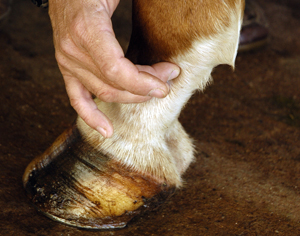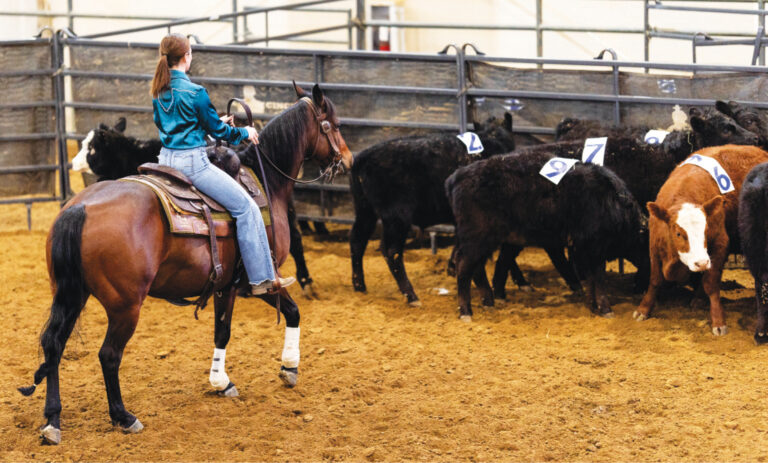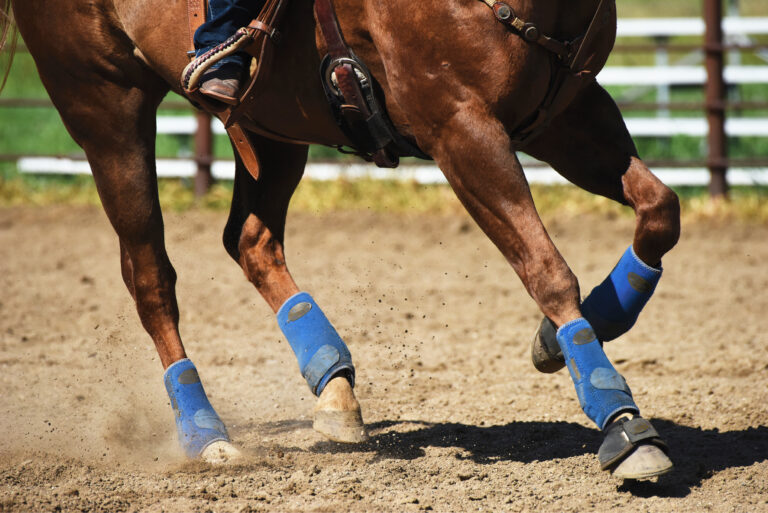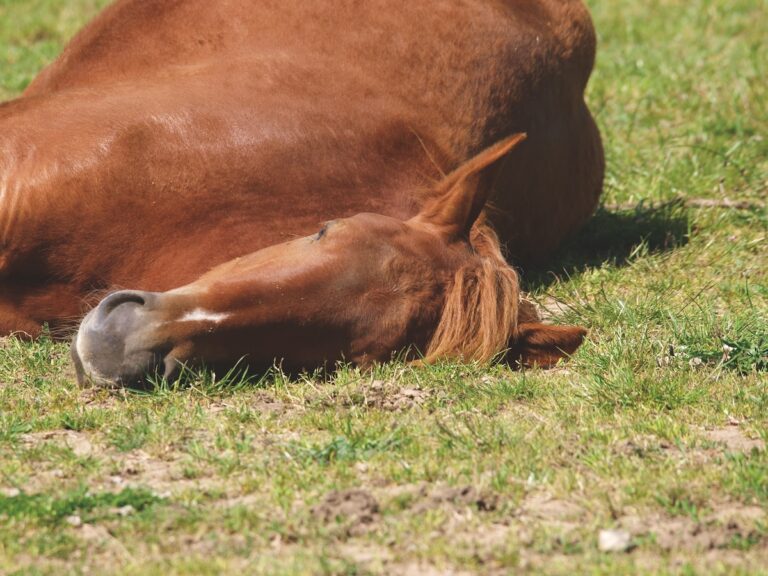Checking your horse’s digital pulse is an important management tool. It can help you identify pain or inflammation in in the hoof.
[READ: Quick Tips for Packing Hooves]
Why Check Your Horse’s Digital Pulse:
Learn to check your horse’s digital pulse so you can catch inflammation as it starts and prevent a condition from worsening. A strong or “throbby” digital pulse indicates inflammation in your horse’s foot or a disruption of the blood flow—conditions you’ll want to ask your vet about.
[READ: Laminitis Do’s & Don’ts]
How to Find the Digital Pulse Around the Fetlock Joint:
Step 1: Squat down on the side of your horse’s left front leg, and place your index finger around the left side of the fetlock joint at its lower edge.

Step 2: Apply pressure with your finger, and strum (run your finger from side to side, as though strumming a guitar) around the fetlock joint, until you feel a cordlike bundle (consisting of vein, artery, and nerve) “snap” underneath your touch.
Step 3: Apply pressure to this bundle for 5 to 10 seconds until you feel a pulse. (Note: If you can’t find a pulse, adjust the amount of pressure you’re placing on the bundle. If you press too hard, you’ll cut off blood flow-therefore the pulse. If you press too softly, you won’t create enough resistance to feel the pulse at all. Don’t get frustrated-practice!)
Step 4: Now here’s the tricky part. You need to determine whether your horse’s digital pulse is throbbing abnormally. It helps to know what a healthy pulse feels like-but you can’t always find a pulse on a healthy leg/hoof. It might be too faint. On the other hand, you’ll know he has a problem if you can easily find his digital pulse. (If you’re not sure, consult your veterinarian or knowledgeable friend.)
Step 5: Repeat Steps 1 through 4 on your horse’s other three legs.
Tip:
Practice finding the digital pulse when your horse’s feet are healthy, so you’ll know exactly where to palpate and what “normal” feels like.
[READ: Check Your Horse’s Vital Signs]






